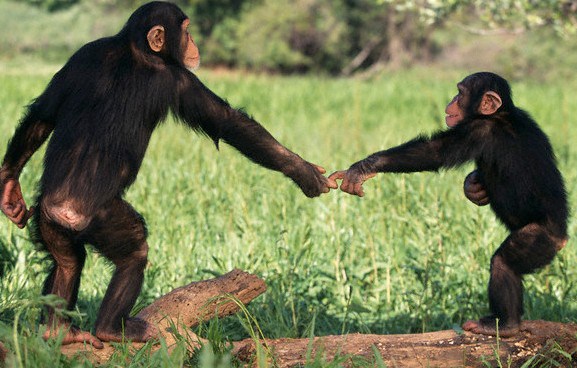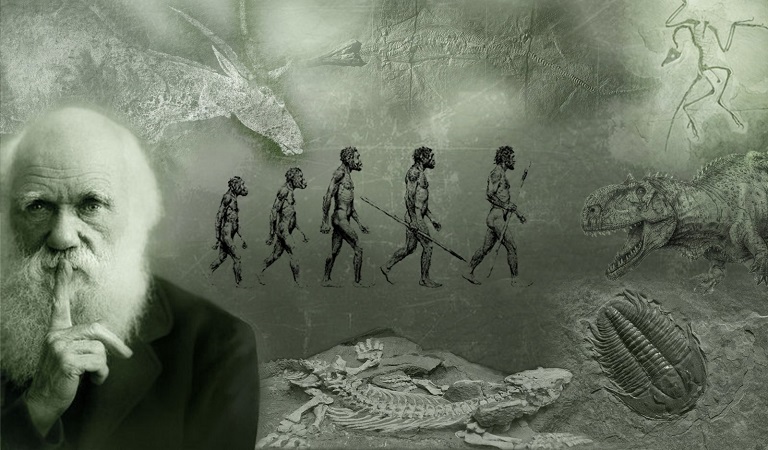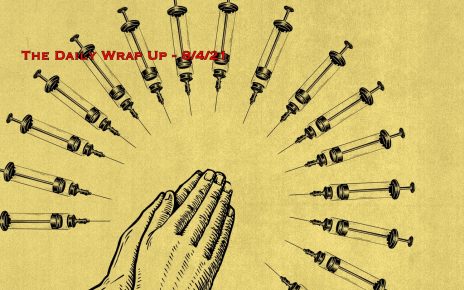History:
The world was profoundly changed on November 24, 1859 when the legendary Charles Darwin released his most famous work, “On The Origin Of Species;” a theory on natural selection that would make the foundational base of evolutionary biology. Contrary to popular belief, Darwin was not the first thinker to suggest organic transmutational evolution, yet his work is considered the most historically transformational, largely because it had been written so that the general public could understand. For the first time in history this type of work was able to break through the heavily ingrained religious/political ideology of the Church of England, which had ruled at the time, allowing society to finally begin looking at reality through that of a scientific understanding rather than a purely religious lens.
Unknown to many today, is the fact that a “transmutation” theory of evolution was first introduced in a scientifically published paper some 50 years prior by a French naturalist named Jean-Baptiste Lamarck. In it, Lamarck suggested that two main forces were at play in evolution: a complexifying force– which  suggested organisms become more complex as they moved up the ladder of progress, and an adaptive force– which said exercise or non-exercise of organs makes them stronger or weaker, so features that aided in the organisms survival were utilized and strengthened and those that were not used, weren’t utilized and were weakened. He claimed these adaptive traits could be passed down through generations to their offspring (soft inheritance). The fairly new field of Epigenetics is now studying this phenomenon.
suggested organisms become more complex as they moved up the ladder of progress, and an adaptive force– which said exercise or non-exercise of organs makes them stronger or weaker, so features that aided in the organisms survival were utilized and strengthened and those that were not used, weren’t utilized and were weakened. He claimed these adaptive traits could be passed down through generations to their offspring (soft inheritance). The fairly new field of Epigenetics is now studying this phenomenon.
Others in the naturalists’ community were aware of this theory, yet over the next 50 years no one was able to offer a mechanism as to how it all worked. That is, until a man by the name of Alfred Russell Wallace, not Darwin, wrote a paper on the theory of evolution through the means of a mechanism known as natural selection. Out of town at the time, Wallace sent his paper to Charles Darwin, whom he faintly knew, and said if it was of interest to pass it on to Charles Lyle, head of the royal society in England. Darwin didn’t know what to do, since he himself had been working on his own theory of evolution, but had yet to complete it. Darwin met with Charles Lyle for counsel and they entered into what is known as the “delicate arrangement,” in which Darwin would release a paper simultaneously with Wallace’s, but Darwin would be presented as the main architect of the theory. This is rather interesting because Darwin didn’t even have a theory or finished paper at the time, and just so happened to breakthrough with a theory when he received the paper from Wallace after months of going nowhere. This has caused some to speculate that Darwin stole one of Wallace’s core ideas, although that’s been difficult to definitively prove today. Others go even further, claiming Darwin was a freemason because his grandfather Erasmus Darwin was allegedly a 33rd degree mason, which would explain his very close ties to Charles Lyle and The Royal Society. That’s a rabbit hole for you to explore at your own leisure though.
Though both papers presented theories on natural selection, it’s extremely important to understand how the historical adoption of Darwin’s views on evolution, not Wallace, would have tremendous implications on society moving forward. Wallace was of the lower class, and in 19th century Victorian England, it was preposterous for a lower class human to provide a theory of such grandeur, whereas Darwin was born of the upper class and a friend of Charles Lyle. It’s unfair to blame Darwin or claim he was a bad person for seemingly accepting undue recognition, but instead more important to note how the interpretation of Darwin’s view over time has shaped human’s perceived understandings of biological evolution.
 Darwin’s interpretation of natural selection was that life is a constant “struggle for existence” and because of limited resources, the only way to survive is through a constant competition of fitness (which can mean many things). This is when the iconic phrase “survival of the fittest” was coined. It proposed, or at least was construed over time, to suggest that there is a ladder from top to bottom, and the top of the ladder is the best and the bottom part of ladder is the worst. However, Wallace, the original founder of the theory, suggested that species adapted because of environmental forces and that only the very bottom (weakest of weak) didn’t survive to pass their genes on. Essentially, he pointed out that species within a population were not necessarily in constant competition if they did not have to be, but merely just adapted to the local environment to meet their needs. This would suggest that there is not necessarily a ladder of hierarchical competition if enough resources were present within the environment.
Darwin’s interpretation of natural selection was that life is a constant “struggle for existence” and because of limited resources, the only way to survive is through a constant competition of fitness (which can mean many things). This is when the iconic phrase “survival of the fittest” was coined. It proposed, or at least was construed over time, to suggest that there is a ladder from top to bottom, and the top of the ladder is the best and the bottom part of ladder is the worst. However, Wallace, the original founder of the theory, suggested that species adapted because of environmental forces and that only the very bottom (weakest of weak) didn’t survive to pass their genes on. Essentially, he pointed out that species within a population were not necessarily in constant competition if they did not have to be, but merely just adapted to the local environment to meet their needs. This would suggest that there is not necessarily a ladder of hierarchical competition if enough resources were present within the environment.
These are two very different interpretations of evolution, but since Darwin was the dominant voice of the theory, his viewpoint has cast its shadow over us for some time. Looking at the world today, it’s none too surprising as to why it has developed into this ultra competitive society of winners and losers, where there isn’t enough to go around and that’s just the way the world works. Whether conscious of it or not, this competitive psyche, that is supposedly hugely backed by the scientific community, has been deeply ingrained into our perceptions as to how society functions as a global system. If someone is rich then they worked hard and if someone is poor then they’re lazy and that’s their own fault. If science says systems are naturally competitive, then it must be in our human nature to be greedy and look out for self-interest if we want to survive, evolve, and reproduce most effectively. This has created a world solely based on ego, and a “take care of your own” mentality. However, this is a narrow point of view and looses sight of two greater forces at play that Lamarck suggested. These seem supremely evident of all evolutionary systems and more aligned with Wallace’s theory.
The Forces That Be:
When accessing the physical and social environment (world), it’s very important to understand that it is a system, which is a set of interacting interdependent components that make up a whole, and therefore must be studied as a system instead of isolated into independent parts unattached to the whole. Systems operate in some type of balance in order to work since one faulty component can jeopardize the whole. There are many types of systems, whether it be a human body, individual countries, or ecosystems. Going further, all these systems have small systems within them (subsystems) such as the nervous, limbic, and digestive systems of the body; government, economic, and health systems of a country; and species, plant, and waterways of an ecosystems. In fact, systems seem to expand out forever towards the known universe and contract forever to the known subatomic levels. They only stop there too because that’s all human beings are able to scientifically measure at this point in time.
These systems seem to be held together by two main forces. Lamarck first suggested to this complexifying force and it was later pointed out in Jan Smuts 1926 book, Holism and Evolution, stating “nature has a tendency to build wholes bigger then its sums.” Overtime, nature seems to have a propensity to form larger and larger systems by bringing everything within it into co-relationship with everything else. It appears complexity/connectedness are one in the same, meaning two independent parts connected make up a more complex part. This is ever apparent when one looks at evolution. For example, single cell organisms became more interconnected and complex over time by combining with other single cell organisms to form multi-cell organisms. Much in the same way, varieties of complex living organisms intersected with non-living components (water, air, soil) to form diverse, yet harmonious ecosystems. In truth, we humans are living specimens. The human body is comprised of roughly 37.2 trillion individual cells that vary in type and group together into various subsystems like organs, bones, and tissues which then interconnect to form a well-balanced human body. Some people refer to this phenomenon as the “super-organism.”
multi-cell organisms. Much in the same way, varieties of complex living organisms intersected with non-living components (water, air, soil) to form diverse, yet harmonious ecosystems. In truth, we humans are living specimens. The human body is comprised of roughly 37.2 trillion individual cells that vary in type and group together into various subsystems like organs, bones, and tissues which then interconnect to form a well-balanced human body. Some people refer to this phenomenon as the “super-organism.”
Not only is all of life bound by a force that desires for everything to interconnect with everything else, but also by a naturally adaptive force that allows each individual being of life to uniquely connect to the whole. This force of adaptability allows all organisms the ability to be uniquely different from each other, since everything has a distinctively different experience of life. This goes right in line with the desire for systems to become more complex, since systems cannot become more complex without an abundance of diverse entities in which it can connect to. One does not grow in a monoculture, or when one is in their comfort zone, instead one must delve into the realm of the unknown to grow in awareness and complexity. Therefore, it is natural and even essential for all beings of life to embrace their own uniqueness, for it allows for a greater expansion of the whole since it cannot connect without new diversity to bring in. Systems simply cannot expand and evolve in consciousness without an abundance of diversity. Just like you cannot have light without dark, male without female, positive without negative, and you without the external world. They cannot exist on their own as a concept because one cannot be defined without comparing it to the other. This allows for individualism of self to be celebrated while still directly aligned with the deeper interconnection of all life. They need each other.
Evolving:
When one takes a step back and takes into account these complimentary forces, it seems pretty evident that the concept of a Darwinian, survival of the fittest, view on life is a very counter evolutionarily belief for humanity. When people only look out for self-interest, they become closed off from everything else and don’t allow for the natural force of interconnection to take place. At the same time, when people don’t embrace their own unique adaptive force, society as a whole becomes a monoculture as everyone desires to be the same thing. This not only hinders society from growing in consciousness through expanded diversity, but it makes people feel incomplete; as they are not truly themselves, but instead just programs of a centralized matrix. It’s time to evolve past the Darwinian view and remember what we are all truly connected to; which is the organic life force that flows through all life. Many refer to this life force as Prana, God, or the Dao. To connect fully to this, it is important to remember too that the world does not solely operate through a scientific sense. Nikola Tesla famously said,
“The day science begins to study non-physical phenomena, it will make more progress in one decade than in all the previous centuries of existence.”
In a sense, science has become societies new religion in which people cling to as the truth, but in reality science and spirituality are just two different tools to be used as aids in our journey through life. It is only when people begin to celebrate their own unique ability to connect, while still allowing the greater force of interconnectivity by the means of love, not control, to take over, that life will begin to fully evolve. A point of full connectivity, in which all distinct points are connected to all other points. It’s time to embrace Alfred Russell Wallace, since logically and scientifically it’s understood that there is enough to go around now. There is no ladder to climb, but instead an infinite array of paths for us each to walk down, no one path better than another. Our job spiritually is just to allow these organic forces to take over, aligning our greatest versions of self with the whole. This allows for evolution to organically take place, for society cannot will its self to evolve but instead must allow evolution to happen naturally. We are not God, but God flows through us if we are open to it.





Darwin was a racist who tried to justify the savagery and evilness Caucasians were inflicting on nonwhite, specifically black people. All races come from the melanated black man and woman. White people are genetic mutants that are unnatural to a sun planet, that’s why they can’t stand the life giving sun. Darwin was a fraud just like the other racist/white “scientist” if that’s what you want to call them.